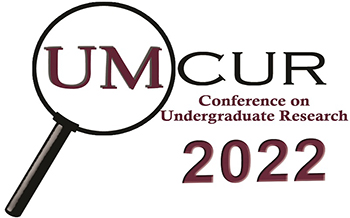Presentation Type
Presentation
Faculty Mentor’s Full Name
Dr. William Rice
Faculty Mentor’s Department
Parks, Tourism, and Recreation
Abstract / Artist's Statement
The City of Boulder Outdoor Space and Mountain Parks manages open space land for its “recreational value and its contribution to the quality of life of the community”–amongst other values (Boulder, Colorado Charter art. XII, sec. 176). Resulting, OSMP is currently utilizing an outcomes-focused management (OFM) approach to understand how OSMP lands affect quality of life and well-being in the community. However, little guidance has been provided in the literature on how to identify which outcomes are most relevant to park and protected area users (Driver & Bruns, 2008). Since 2008, efforts have been made to understand outcome relevancy and how to measure it, but a formalized process has not been produced (Drage et al., 2021; Manning, 2012; Miller et al., 2018; Rice et al. 2019). This study seeks to: 1) formalize a process to measure quality of life and well-being outcomes using a three-pronged approach, 2) inform OSMP management of the most salient outcomes of OSMP users, and 3) inform future inquiry regarding those outcomes. Data collection consisted of posting quick response code-enabled signs at various OSMP trailheads which linked to a survey that gathered: 1) the five most salient outcome domains reported by participants, 2) qualitative data pointing to indicators (or specific outcomes) within each outcome domain, and 3) spatial data concerning where participants obtained outcomes on OSMP properties. We identified the eight outcome domains which impact OSMP users the most. Of those domains, mainly positive indicators such as enjoying getting physical exercise, were coded from participant summaries. Finally, we discovered that outcome domains were reported at a variety of places on OSMP properties, but three most-selected domains were reported with hotspots near the Flatirons and portions of Gregory Canyon and South Mesa. The results of this study include:
- Providing a three-pronged approach to identify quality of life and well-being outcomes.
- Providing a template to OFM researchers and managers for measuring outcomes that most impact users in protected areas
- Providing OSMP management current outcomes that users are obtaining from their lands as well a baseline for future research measuring the degree to which the outcomes were obtained.
Category
Social Sciences
Developing Quality of Life Indicators for Open Space and Parks Management: a Three-Pronged Approach
UC 332
The City of Boulder Outdoor Space and Mountain Parks manages open space land for its “recreational value and its contribution to the quality of life of the community”–amongst other values (Boulder, Colorado Charter art. XII, sec. 176). Resulting, OSMP is currently utilizing an outcomes-focused management (OFM) approach to understand how OSMP lands affect quality of life and well-being in the community. However, little guidance has been provided in the literature on how to identify which outcomes are most relevant to park and protected area users (Driver & Bruns, 2008). Since 2008, efforts have been made to understand outcome relevancy and how to measure it, but a formalized process has not been produced (Drage et al., 2021; Manning, 2012; Miller et al., 2018; Rice et al. 2019). This study seeks to: 1) formalize a process to measure quality of life and well-being outcomes using a three-pronged approach, 2) inform OSMP management of the most salient outcomes of OSMP users, and 3) inform future inquiry regarding those outcomes. Data collection consisted of posting quick response code-enabled signs at various OSMP trailheads which linked to a survey that gathered: 1) the five most salient outcome domains reported by participants, 2) qualitative data pointing to indicators (or specific outcomes) within each outcome domain, and 3) spatial data concerning where participants obtained outcomes on OSMP properties. We identified the eight outcome domains which impact OSMP users the most. Of those domains, mainly positive indicators such as enjoying getting physical exercise, were coded from participant summaries. Finally, we discovered that outcome domains were reported at a variety of places on OSMP properties, but three most-selected domains were reported with hotspots near the Flatirons and portions of Gregory Canyon and South Mesa. The results of this study include:
- Providing a three-pronged approach to identify quality of life and well-being outcomes.
- Providing a template to OFM researchers and managers for measuring outcomes that most impact users in protected areas
- Providing OSMP management current outcomes that users are obtaining from their lands as well a baseline for future research measuring the degree to which the outcomes were obtained.
